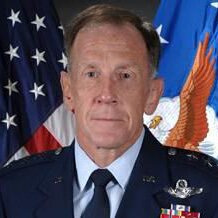By Colin Clark Wednesday, September 15th, 2010 9:59 am
<http://www.dodbuzz.com/category/commentary/> ,
With the Senate likely to vote on the new START treaty this week, activists are eager to ensure every senator has what they think is the right information. John Bolton, former Bush administration honcho on arms controls, fired another salvo in the Wall Street Journal, arguing that the Obama administration is wrong to count converted boomers as nuclear assets. Dennis M. Gormley, a former intelligence professional who now teaches at the University of Pittsburg’s Ridgway Center, strikes back at Bolton here. arguing that the Joint Chiefs actually know what they are doing and that Bolton is wrong.
In yet another hollow attack on the Obama administration’s efforts to proceed successfully with Senate ratification of the New START treaty, John Bolton argues that by choosing to count formerly nuclear-armed launchers (land-based and submarine-launched ballistic missiles and heavy bombers) that are converted to carry conventional weapons as if they were nuclear-armed, the U.S. will reduce its ability to project conventional power around the globe. In doing so, Bolton insults the professional judgment and integrity of the Joint Chiefs of Staff by insinuating that they bowed to White House pressure to live with such treaty strictures or else face adverse career consequences. Nothing could be further from the truth.
The key to achieving such power projection capabilities, Bolton argues, depends on a new concept called “conventional prompt global strike.” Some missing facts about this concept are in order. When the Air Force conceived of the global strike concept in the mid-1990s, it initially entailed the use of conventionally armed fighters and bombers, later joined by Navy Tomahawk cruise missiles. The concept became much more controversial when the Bush administration reportedly added a nuclear dimension to an otherwise modest conventional component. This was consistent with that administration’s 2002 Nuclear Posture Review, which conflated conventional and nuclear weapons as if they were of similar consequence.
Conventional prompt global strike became even more controversial when the Bush Pentagon proposed in 2006 to spend $500 million on replacing nuclear warheads on some Trident submarine-launched ballistic missiles to achieve prompt (within one hour) strikes on high-priority targets, such a underground facilities, terrorists, or missile launchers. The danger, of course, is that these missiles might inadvertently appear to be the leading edge of a nuclear attack on Russian nuclear targets, with untold consequences. While John Bolton appears unconcerned about such a scenario, the bipartisan National Research Council (NRC) concluded in a report rendered before the 2008 election that “the ambiguity between nuclear and conventional payloads can never be totally resolved.”
The NRC did in fact endorse a highly circumscribed application for the conventionally armed Trident against a fleeting terrorist or rogue state target, which would involve no more than one to four such weapons. However, the Congress has remained adamant about refusing to fund for such a project.
Wisely, the Obama administration has instead turned to a land-based ballistic missile located separate from nuclear silo fields with a provision for inspection by Russia to allay any remaining concerns. Given the limited number of conventionally armed long-range ballistic missiles that would be required to deal with terrorist or rogue state missile launches, New START’s counting rules would have virtually no effect on maintaining ample nuclear strike capability under the treaty’s limit of 700 delivery vehicles and 1550 warheads.
Thus, Bolton’s so-called “birds in hand” (his assumption that were the 2002 Treaty of Moscow, which only covered limits on nuclear warheads, not launchers, to govern future decision-making on conventional prompt global strike, large numbers of U.S. launchers would be available for conventional use. But such a pipe dream is belied by the virtually unanimous rejection by Congress and defense specialists of converting large numbers of legacy nuclear systems due to their inherent warning ambiguity. So much for Bolton’s “birds in hand.”
What truly is at hand in regard to long-range conventional strike? Bolton neglects to mention that the U.S. Navy has converted four of its 18 Trident Ohio-class submarines, each of which can carry 154 Tomahawk land-attack cruise missiles for a total of 616 missiles. The latest version of this missile features a two-way satellite data link that permits it to attack one of 16 preprogrammed targets or take new GPS coordinates to attack a fleeting target of opportunity.
If today’s subsonic Tomahawks are insufficiently “prompt,” the Navy is at work developing a supersonic cruise missile and has investigated a concept for a “sea-launched global strike missile,” while the Pentagon’s Defense Advanced Research Projects Agency is working on the X-51 hypersonic cruise missile, designed to strike out to 600 miles in 10 minutes.
Moreover, the U.S. Navy is moving ahead with the carrier-based X-47B unmanned combat air vehicle-a high-performance aircraft without a pilot-that promises a novel form of networked drone warfare capable of dealing with the most challenging time-sensitive targets. During the 2006 war in Lebanon, Israeli forces struggled to find and attack Hezbollah’s ubiquitous short-range Katyusha rockets, which can be emplaced by one man in a matter of seconds.
However, Israeli air and ground forces effectively flooded the skies with UAVs networked together to provide loitering aircraft with precise targeting coordinates of medium– and long-range Hezbollah rocket launchers. Consequently, Israel destroyed between 80 and 90 percent of these longer-range rocket launchers (around 125), all within a time frame of between 45 and 60 seconds between detection and attack.
Thus, while future long-range conventional ballistic missiles will count under New START’s counting rules, the impact of employing only a small number of legacy nuclear delivery missiles is patently insignificant. There is no damaging trade-off between conventional and nuclear capabilities, as Bolton suggests. Truly global U.S. force projection capabilities are already unparalleled and destined to evolve even more so.
And perhaps the most important dimension of America’s conventional superiority is that a good portion of it is based in forward areas-unlike Bolton’s wish to see conventional prompt global strike based largely on U.S. territory. This provides lasting assurance to allies and friends that America’s robust conventional capabilities are confidently committed for both deterrence and war fighting.
Dennis M. Gormley is a Senior Research Fellow at the University of Pittsburg’s Matthew B. Ridgway Center for International Security Studies. Gormley served on the panel assisting the Deputy Director of National Intelligence (Analysis) plan and implement the 9/11 Commission’s recommendations for improving intelligence integration. He served in the intelligence community for 10 years, including as head of foreign intelligence at the Army’s Harry Diamond Laboratories in Washington.
Read more: http://www.dodbuzz.com/2010/09/15/bolton-is-still-wrong-on-start/#ixzz0zbpykpoZ




































